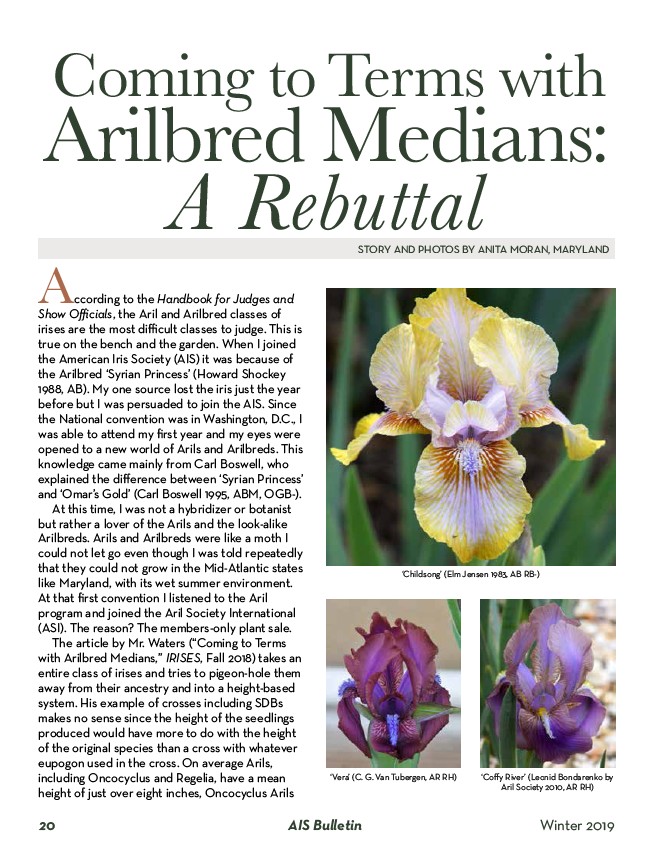
Coming to Terms with
Arilbred Medians:
A Rebuttal
According to the Handbook for Judges and
Show Officials, the Aril and Arilbred classes of
irises are the most difficult classes to judge. This is
true on the bench and the garden. When I joined
the American Iris Society (AIS) it was because of
the Arilbred ‘Syrian Princess’ (Howard Shockey
1988, AB). My one source lost the iris just the year
before but I was persuaded to join the AIS. Since
the National convention was in Washington, D.C., I
was able to attend my first year and my eyes were
opened to a new world of Arils and Arilbreds. This
knowledge came mainly from Carl Boswell, who
explained the difference between ‘Syrian Princess’
and ‘Omar’s Gold’ (Carl Boswell 1995, ABM, OGB-).
At this time, I was not a hybridizer or botanist
but rather a lover of the Arils and the look-alike
Arilbreds. Arils and Arilbreds were like a moth I
could not let go even though I was told repeatedly
that they could not grow in the Mid-Atlantic states
like Maryland, with its wet summer environment.
At that first convention I listened to the Aril
program and joined the Aril Society International
(ASI). The reason? The members-only plant sale.
The article by Mr. Waters (“Coming to Terms
with Arilbred Medians,” IRISES, Fall 2018) takes an
entire class of irises and tries to pigeon-hole them
away from their ancestry and into a height-based
system. His example of crosses including SDBs
makes no sense since the height of the seedlings
produced would have more to do with the height
of the original species than a cross with whatever
eupogon used in the cross. On average Arils,
including Oncocyclus and Regelia, have a mean
height of just over eight inches, Oncocyclus Arils
STORY AND PHOTOS BY ANITA MORAN, MARYLAND
‘Childsong’ (Elm Jensen 1983, AB RB-)
‘Coffy River’ (Leonid Bondarenko by
Aril Society 2010, AR RH)
‘Vera’ (C. G. Van Tubergen, AR RH)
20 AIS Bulletin Winter 2019